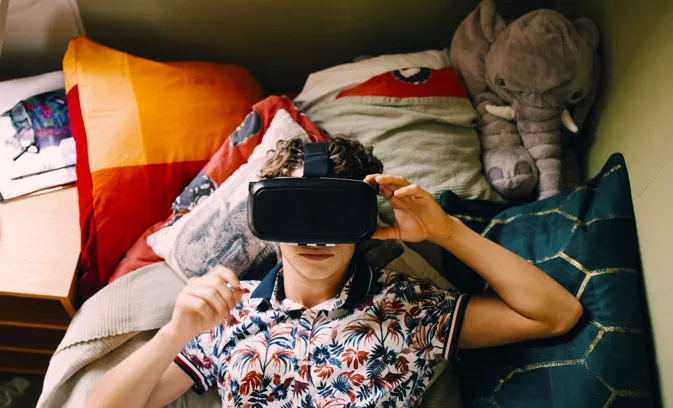
Augmented Reality and Virtual Reality in Healthcare
New possibilities for XR (AR VR) implementation in healthcare
Augmented Reality and Virtual Reality in Healthcare
During pandemic COVID 19, it was nothing short of a nightmare for the healthcare industry, and the most impacted in the industry were the caregivers and the nurses.
As a result, during and post covid times, there was a decline in the availability of nurses in the hospitals, which led to a deficit of caregivers at the hospitals. In addition, the medical students and nurses encountered difficulties during practical sessions since most current technologies could not provide face-to-face interactions or recreate clinical situations. This situation encouraged and led to using VR in healthcare education and training.
AR VR technology has become a game-changer in the healthcare industry in more than one way. The Virtual Reality adoption rate has seen a massive rise, with most hospitals or medical universities opting to implement VR applications to train registered nurses and professionals, perform surgery, or provide medical education remotely.
How AR and VR technology will significantly impact medical care:
The potential of VR is to improve healthcare outcomes: The potential reduction of manpower (and possibly cost) will be one of the market drivers for both AR and VR.
However, the primary driver will be the scope of medical advancements to provide-
-
Preventions and wellness
-
Objective assessments
-
Functional training
-
Improved interventions
-
Medical training and medical assistance
-
Procedure training
-
Clinical skills training
-
Use of equipment training
-
Therapy training and assessment
Business challenges addressed by VR applications in healthcare:
Per a recent study by healthcare market research organizations, Virtual Reality is used by technologists in several areas, including patient care, medical training, and hospital administration.
According to the 'Fortune Business Insights’ report, with a CAGR of 16.21% throughout the projected period, the VR in the healthcare industry is expected to reach US$8.03B by 2027, up from US$2.06B in 2019.
The rise is attributed to an increase in the need for novel diagnostic tools, as well as a rise in neurological illnesses and disease awareness.
Here are some of the most important uses of VR in the healthcare industry:
-
Pain management
-
Education and training
-
Surgery
-
Patient care management
-
Post-traumatic stress disorders
-
Rehabilitation and therapy procedures
-
Procedure training using Virtual Reality like - Tracheostomy care
-
Technology to enable AR VR in healthcare
Components of AR/VR technologies
For any AR VR application or product, we need to have hardware and software elements available. The hardware components interact with reality and software to process, analyze, interpret, and construct the needed 'extra'.
AR/VR hardware includes:
The devices like optical sensors, accelerometers, digital cameras, gyroscopes, solid-state compasses, and wireless sensors are the sensors/tracking devices.
Smart glasses, smartphones, lenses, laptops, and tablets and the channels used as CPU and display/output devices.The devices used commonly for user inputs are touch screens, gesture devices, microphones, stylus, pointers, gloves, or other body wear.
AR/VR software includes: To develop an application in AR and VR, the technologies used are OpenCV, Vuforia, ARKit, Wikitude, EasyAR, and ARToolKit.
Cost components of AR VR application development
In the healthcare industry, the cost of developing AR VR applications completely depends on the area of service it offers to its patients and practitioners. The team would require backend support (developer -visible part) for developing the application's frontend (consumer-visible part). The cost of developing on-demand augmented and virtual reality healthcare applications would range between USD 40000 – 200000 for development alone.
Conclusion
AR VR technologies are quickly gaining popularity and becoming more widespread in daily practices in healthcare and medicine. These technologies can provide great quality assistance to doctors and medical specialists in patient treatment and educate healthcare consumers on how to better care for their health.
With the increased demand for AR/VR medical technologies and their proven efficacy, many healthcare providers are ready to implement them in their daily practices to improve their patients' experience.
At Tietoevry, we can add value to the healthcare business by developing AR and VR technology solutions to improve patients' outcomes and doctors' performance as we are competent to develop a framework that will suit any customer needs.
Together, let us enhance patient care by applying VR technology in healthcare.




